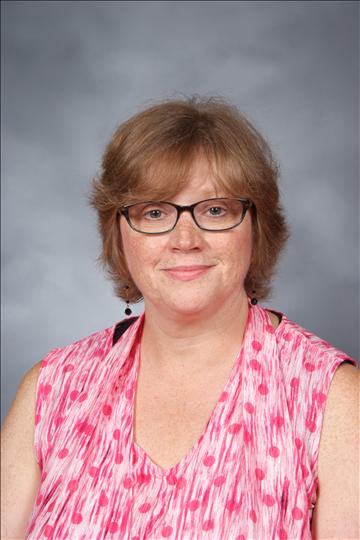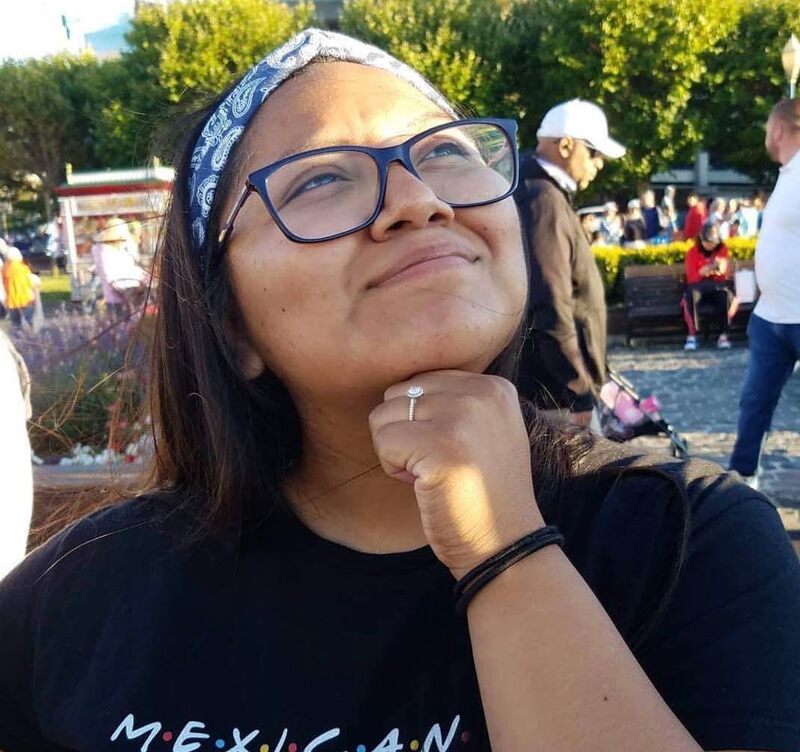SPANISH
Primary Years Programme (PYP) Spanish Philosophy
Peirce School of International Studies offers every student the opportunity to learn Spanish as a second language through an integrated PYP Curriculum. “Every learner benefits from having access to different languages, and, through that access, to different cultures and perspectives. Acquisition of more than one language enriches personal development and helps international-mindedness.”
The main goal of the PYP Curriculum as well as the primary objective of our school is to provide every student the opportunity to learn about other cultures and value diversity through language learning. “Exposure to and experience with languages, with all their richness and diversity creates an inquisitiveness about life and learning and a confidence about creating new social interactions. Language provides a vehicle for learners to engage with the world and, in IB World School, to relate to, and accept, responsibility for the mission of the IB.”
Scope & Sequence
PYP Spanish units are designed based on following transdisciplinary themes and each of them addresses a central idea relevant to the theme:
Language Level Expectations
Students from Kindergarten to 5th grade receive Spanish instruction in a weekly basis. They are taught 60 minutes per week and according to the Office of Language and Cultural Education students who receive less than 120 minutes of the target language instruction per week is considered a Foreign Language Exploratory Program (FLEX). This program is the most-commonly implemented World Language Program in CPS elementary schools. Students who study the language from Kindergarten to 5th grade can be expected to reach a language proficiency level equivalent to Novice Mid as stated by the World Language Guidance Document from CPS.
Visit Ms. Sandoval's PYP Spanish website.
Peirce School of International Studies offers every student the opportunity to learn Spanish as a second language through an integrated PYP Curriculum. “Every learner benefits from having access to different languages, and, through that access, to different cultures and perspectives. Acquisition of more than one language enriches personal development and helps international-mindedness.”
The main goal of the PYP Curriculum as well as the primary objective of our school is to provide every student the opportunity to learn about other cultures and value diversity through language learning. “Exposure to and experience with languages, with all their richness and diversity creates an inquisitiveness about life and learning and a confidence about creating new social interactions. Language provides a vehicle for learners to engage with the world and, in IB World School, to relate to, and accept, responsibility for the mission of the IB.”
Scope & Sequence
PYP Spanish units are designed based on following transdisciplinary themes and each of them addresses a central idea relevant to the theme:
- Who we are
- Where we are in place and time
- How we express ourselves
- How the world works
- How we organize ourselves
- Sharing the planer
Language Level Expectations
Students from Kindergarten to 5th grade receive Spanish instruction in a weekly basis. They are taught 60 minutes per week and according to the Office of Language and Cultural Education students who receive less than 120 minutes of the target language instruction per week is considered a Foreign Language Exploratory Program (FLEX). This program is the most-commonly implemented World Language Program in CPS elementary schools. Students who study the language from Kindergarten to 5th grade can be expected to reach a language proficiency level equivalent to Novice Mid as stated by the World Language Guidance Document from CPS.
Visit Ms. Sandoval's PYP Spanish website.
Middle Years Programme (MYP) Spanish Overview
Students enrolled at Helen C. Peirce School of International Studies take Spanish as their World Language course. The classes are designed to get students to speak, read, and write in Spanish. After completing 6th, 7th, and 8th grade levels, students have the opportunity to enter into their high schools as an advanced language learner. Most students at Peirce test into Spanish 2 Honors or Spanish 3/3 Honors classes. Many native speaking students enter into Spanish 4/5 levels of Spanish after completing their advanced coursework at Peirce. At Helen C. Peirce School of International Studies, all students are afforded the ability to accelerate in their language studies.
MYP Spanish Philosophy
All students can learn Spanish. Students can take a non-native speakers level or native speakers level of Spanish. Classes focus on reading, writing, and speaking in Spanish. There is an emphasis on the five C's of language acquisition: Communication, Cultures, Connections, Comparisons, and Communities. Students reflect on their own language and culture and compare/contrast throughout their coursework. Students synthesize the language through various projects and activities in each unit of study. Instruction is differentiated and provides access points for all students.
MYP Spanish Scope & Sequence
Non-native Spanish speakers learn the basics of Spanish grammar and start using the language immediately. Students begin by learning greetings and goodbyes and continue to describe themselves and others. Then students learn regular and irregular present tense verbs to talk about what they and others do. Students continue expanding their vocabulary by learning about school, food, community events/places, the home, shopping, recreational activities, the body, telecommunications, leisure and vacation vocabulary. Students also learn idiomatic expressions, past tense forms, and future and conditional forms of the language. Each unit of study focuses on various countries in the Spanish speaking world to enhance their cultural competency. By the end of their 3 years in the MYP non native classes, students have acquired enough Spanish to equal 2 full years of high school level Spanish.
Native speaker classes are advanced classes, focusing on the knowledge of students and thinkers and communications in Spanish. Students reflect on their culture and compare/contrast themselves with others. Each unit of study develops their reading, writing, and speaking in Spanish. Classes are instructed almost entirely in Spanish. Grammatical structures are compared and contrasted to help our bilingual MYP students understand the language and its function within the context of the community. There is a large focus on literature and writing in the native speakers coursework. Students read rigorous selections of literature, from fiction to non-fiction and poetry. Students review all forms of grammar tenses and modes and many test into high levels of Spanish when they continue with the language in their high schools.
Students enrolled at Helen C. Peirce School of International Studies take Spanish as their World Language course. The classes are designed to get students to speak, read, and write in Spanish. After completing 6th, 7th, and 8th grade levels, students have the opportunity to enter into their high schools as an advanced language learner. Most students at Peirce test into Spanish 2 Honors or Spanish 3/3 Honors classes. Many native speaking students enter into Spanish 4/5 levels of Spanish after completing their advanced coursework at Peirce. At Helen C. Peirce School of International Studies, all students are afforded the ability to accelerate in their language studies.
MYP Spanish Philosophy
All students can learn Spanish. Students can take a non-native speakers level or native speakers level of Spanish. Classes focus on reading, writing, and speaking in Spanish. There is an emphasis on the five C's of language acquisition: Communication, Cultures, Connections, Comparisons, and Communities. Students reflect on their own language and culture and compare/contrast throughout their coursework. Students synthesize the language through various projects and activities in each unit of study. Instruction is differentiated and provides access points for all students.
MYP Spanish Scope & Sequence
Non-native Spanish speakers learn the basics of Spanish grammar and start using the language immediately. Students begin by learning greetings and goodbyes and continue to describe themselves and others. Then students learn regular and irregular present tense verbs to talk about what they and others do. Students continue expanding their vocabulary by learning about school, food, community events/places, the home, shopping, recreational activities, the body, telecommunications, leisure and vacation vocabulary. Students also learn idiomatic expressions, past tense forms, and future and conditional forms of the language. Each unit of study focuses on various countries in the Spanish speaking world to enhance their cultural competency. By the end of their 3 years in the MYP non native classes, students have acquired enough Spanish to equal 2 full years of high school level Spanish.
Native speaker classes are advanced classes, focusing on the knowledge of students and thinkers and communications in Spanish. Students reflect on their culture and compare/contrast themselves with others. Each unit of study develops their reading, writing, and speaking in Spanish. Classes are instructed almost entirely in Spanish. Grammatical structures are compared and contrasted to help our bilingual MYP students understand the language and its function within the context of the community. There is a large focus on literature and writing in the native speakers coursework. Students read rigorous selections of literature, from fiction to non-fiction and poetry. Students review all forms of grammar tenses and modes and many test into high levels of Spanish when they continue with the language in their high schools.
The 5 C's: Communication, Culture, Connections, Comparisons, Communities
Standards-based world languages education and the Illinois state and national standards reflect the themes in the Standards for Foreign Language Learning known as "The Five Cs." These standards describe the "what" (content) of world languages learning and form the core of standards-based instruction in the world languages classroom.
Communication
The communication standard stresses the use of language for communication in "real life" situations. It emphasizes "what students can do with language" rather than "what they know about language." Students are asked to communicate in oral and written form, interpret oral and written messages, show cultural understanding when they communicate, and present oral and written information to various audiences for a variety of purposes.
Cultures
Cultural understanding is an important part of world languages education. Experiencing other cultures develops a better understanding and appreciation of the relationship between languages and other cultures, as well as the student's native culture. Students become better able to understand other people's points of view, ways of life, and contributions to the world.
Connections
World languages instruction must be connected with other subject areas. Content from other subject areas is integrated with world language instruction through lessons that are developed around common themes.
Comparisons
Students are encouraged to compare and contrast languages and cultures. They discover patterns, make predictions, and analyze similarities and differences across languages and cultures. Students often come to understand their native language and culture better through such comparisons.
Communities
Extending learning experiences from the world language classroom to the home and multilingual and multicultural community emphasizes living in a global society. Activities may include: field trips, use of e-mail and the World Wide Web, clubs, exchange programs and cultural activities, school-to-work opportunities, and opportunities to hear speakers of other languages in the school and classroom.
Visit Ms. Lenihan's MYP Spanish website.
Standards-based world languages education and the Illinois state and national standards reflect the themes in the Standards for Foreign Language Learning known as "The Five Cs." These standards describe the "what" (content) of world languages learning and form the core of standards-based instruction in the world languages classroom.
Communication
The communication standard stresses the use of language for communication in "real life" situations. It emphasizes "what students can do with language" rather than "what they know about language." Students are asked to communicate in oral and written form, interpret oral and written messages, show cultural understanding when they communicate, and present oral and written information to various audiences for a variety of purposes.
Cultures
Cultural understanding is an important part of world languages education. Experiencing other cultures develops a better understanding and appreciation of the relationship between languages and other cultures, as well as the student's native culture. Students become better able to understand other people's points of view, ways of life, and contributions to the world.
Connections
World languages instruction must be connected with other subject areas. Content from other subject areas is integrated with world language instruction through lessons that are developed around common themes.
Comparisons
Students are encouraged to compare and contrast languages and cultures. They discover patterns, make predictions, and analyze similarities and differences across languages and cultures. Students often come to understand their native language and culture better through such comparisons.
Communities
Extending learning experiences from the world language classroom to the home and multilingual and multicultural community emphasizes living in a global society. Activities may include: field trips, use of e-mail and the World Wide Web, clubs, exchange programs and cultural activities, school-to-work opportunities, and opportunities to hear speakers of other languages in the school and classroom.
Visit Ms. Lenihan's MYP Spanish website.
Victoria Delgado
|
Eight interesting facts about Mrs. Delgado:
|
Kimberly OCampo
|
Under Construction
|




